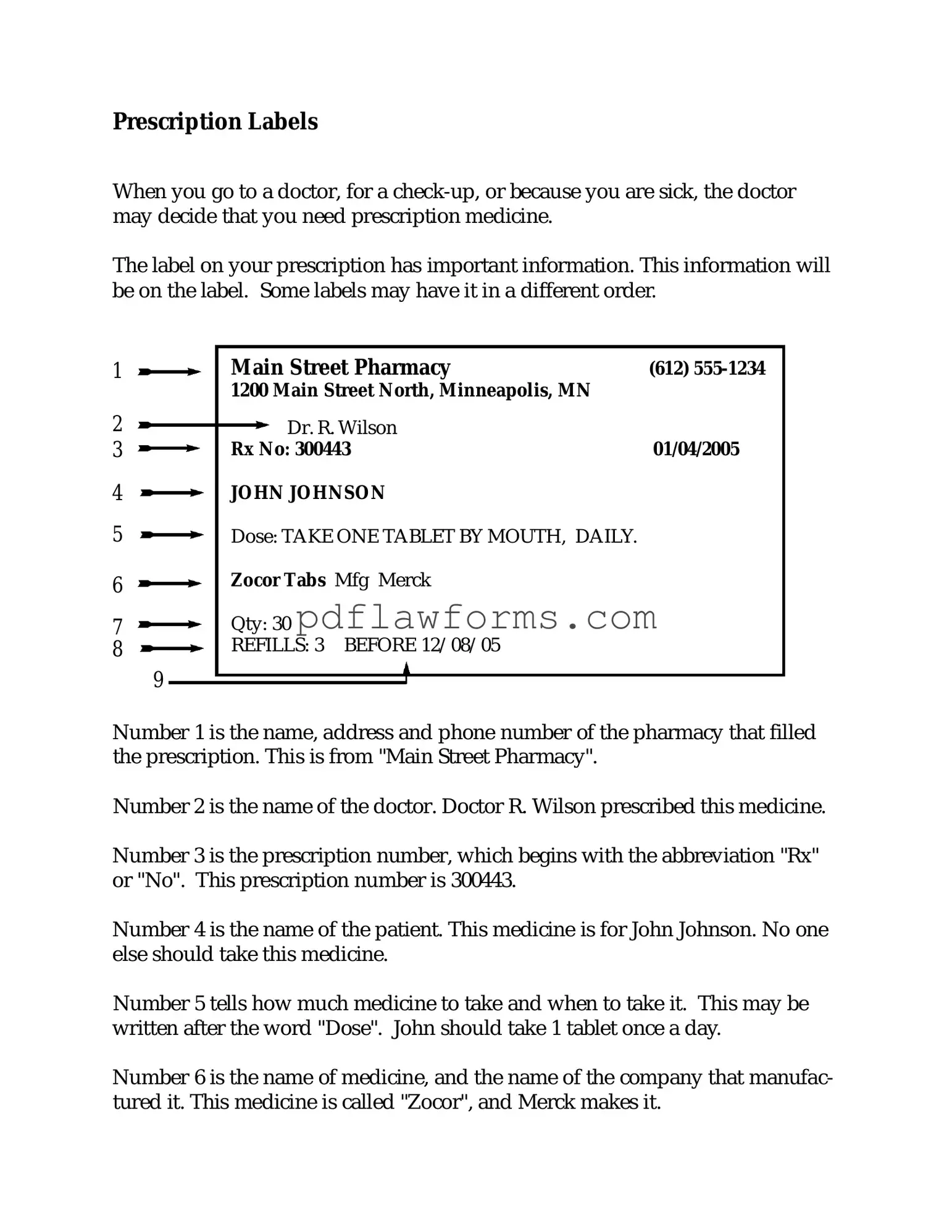The Prescription Label form plays a crucial role in ensuring that patients receive their medications safely and effectively. This form typically includes essential information such as the patient’s name, the prescribing physician’s details, the medication name, dosage instructions, and the pharmacy's contact information. Each element is designed to enhance clarity and promote proper use of the medication. Furthermore, the form often contains warnings about potential side effects and interactions with other drugs, which are vital for patient safety. By providing clear and concise instructions, the Prescription Label form helps patients understand how to take their medications correctly, thereby improving adherence to treatment plans. In this article, we will explore the various components of the Prescription Label form, discuss its importance in the healthcare process, and highlight best practices for both patients and healthcare providers to ensure optimal medication management.
